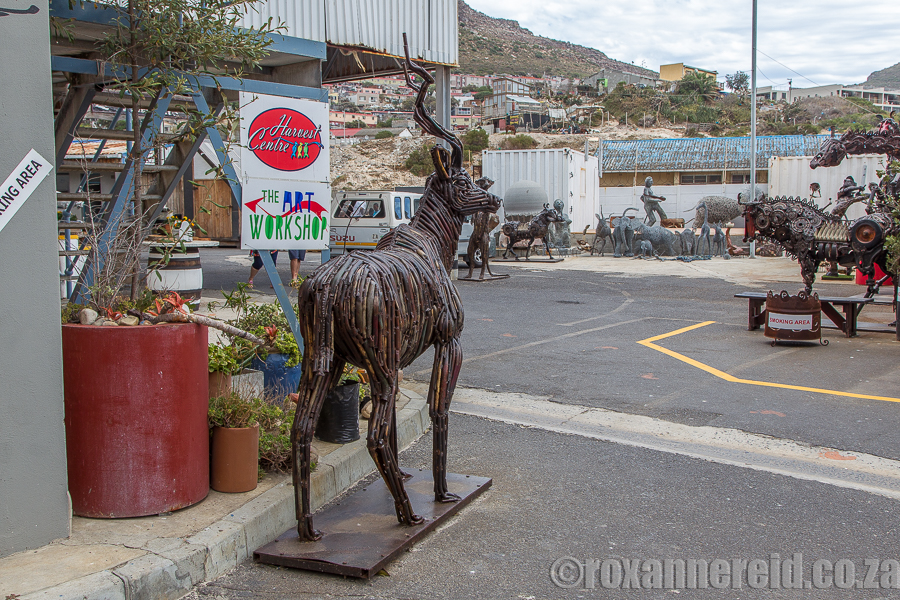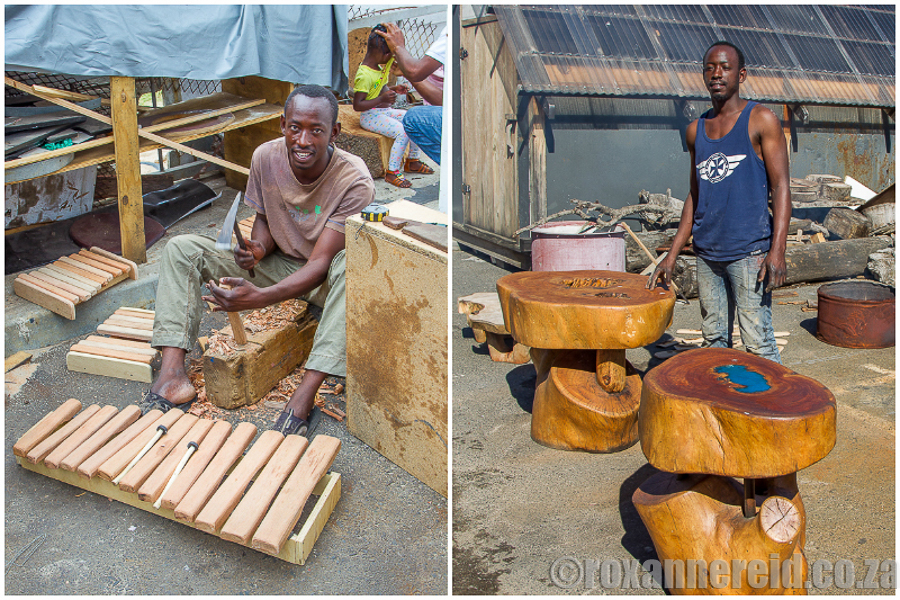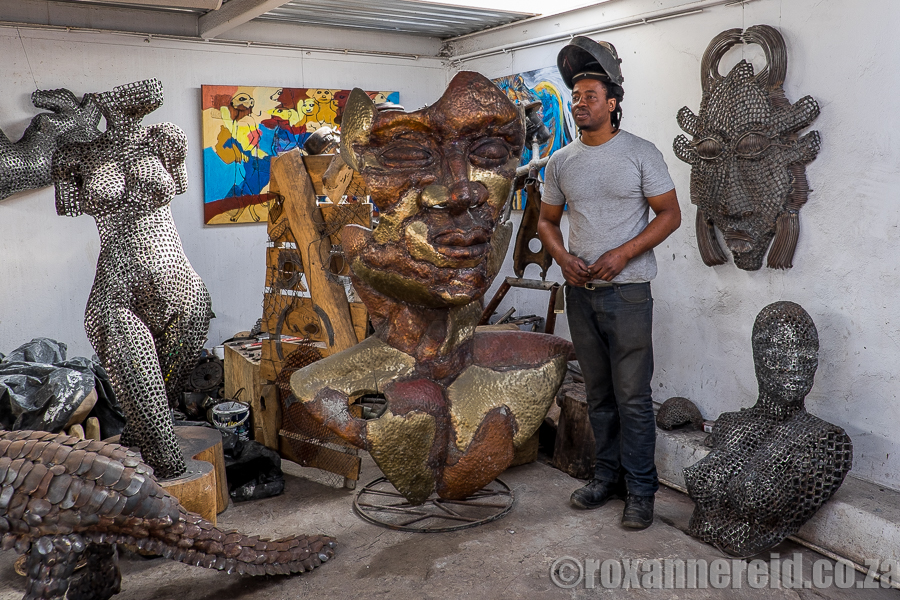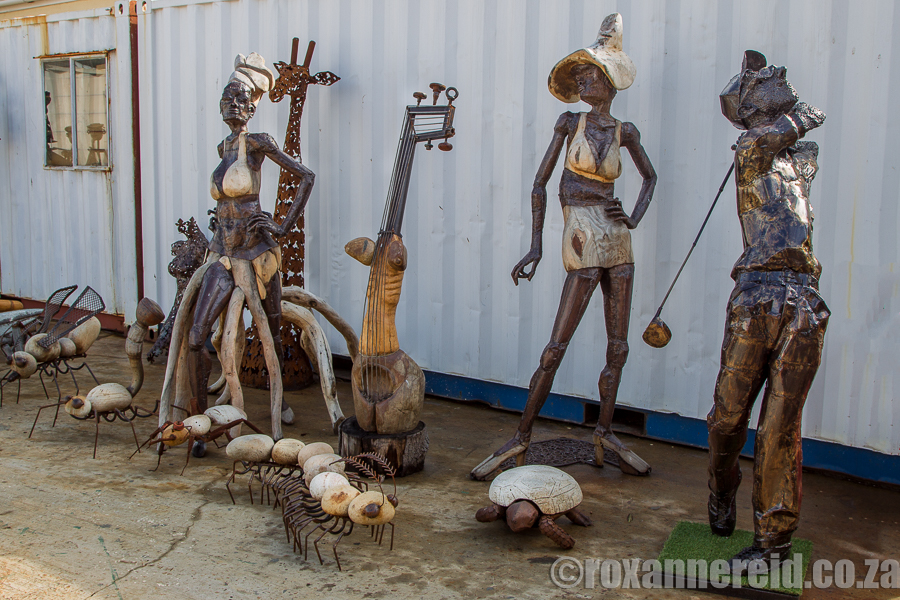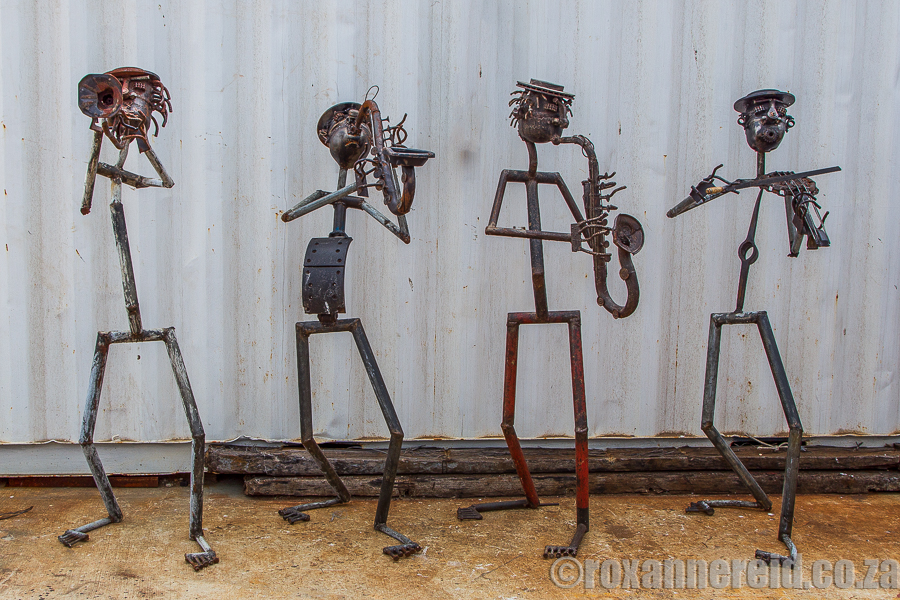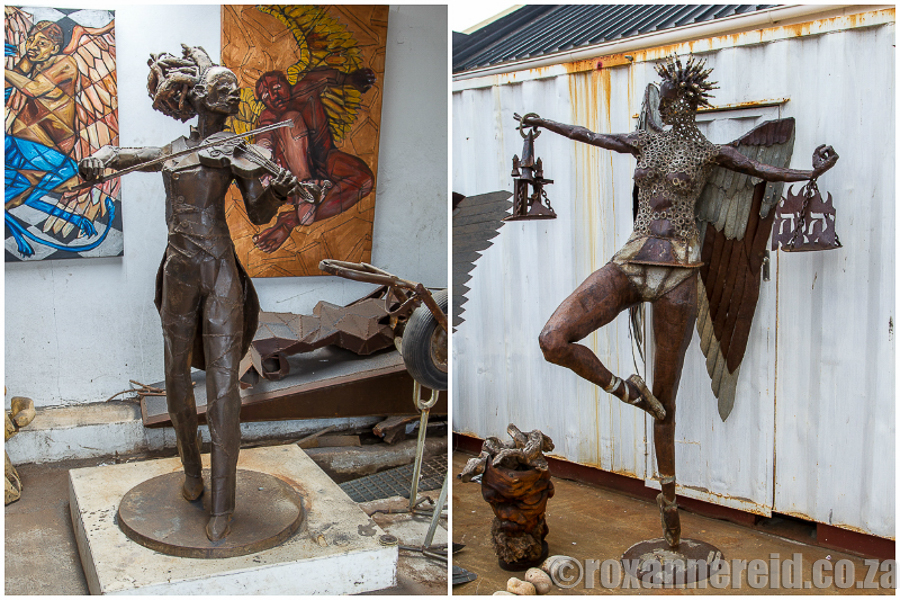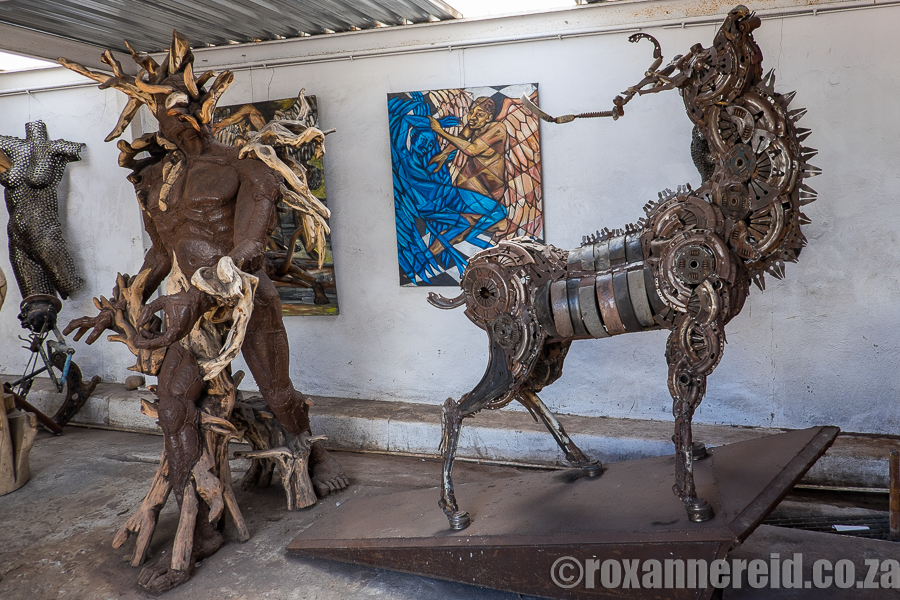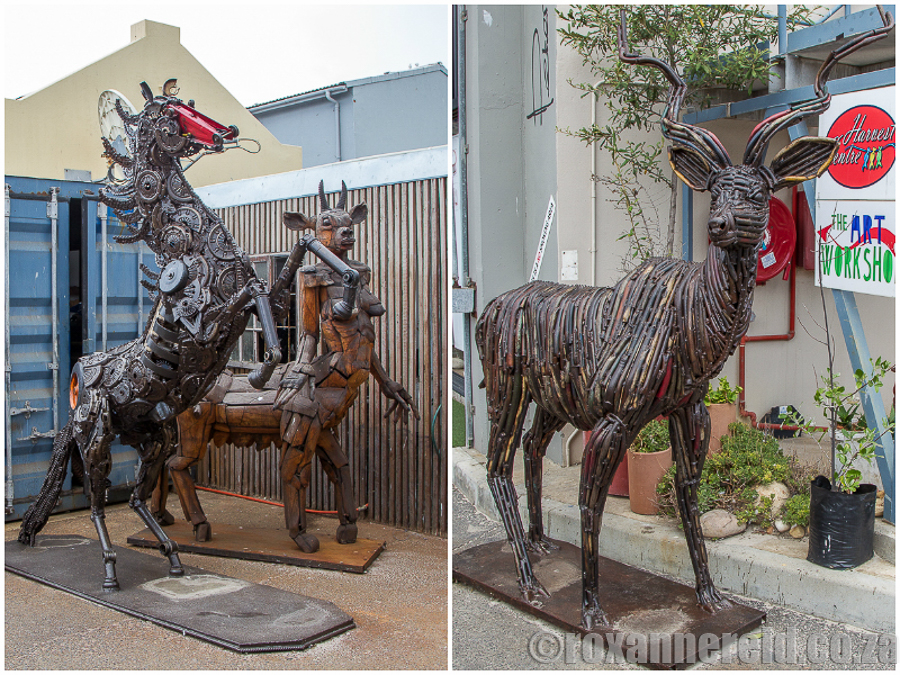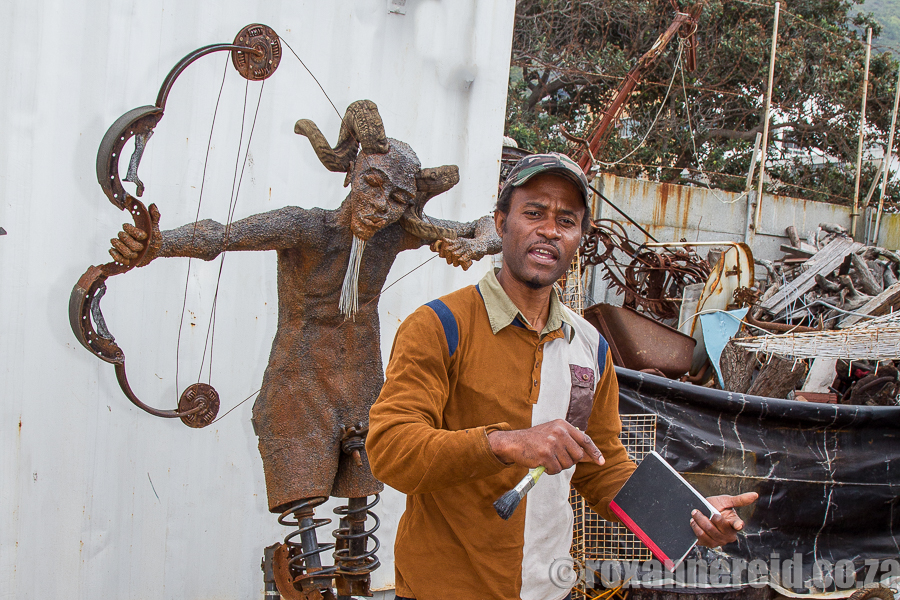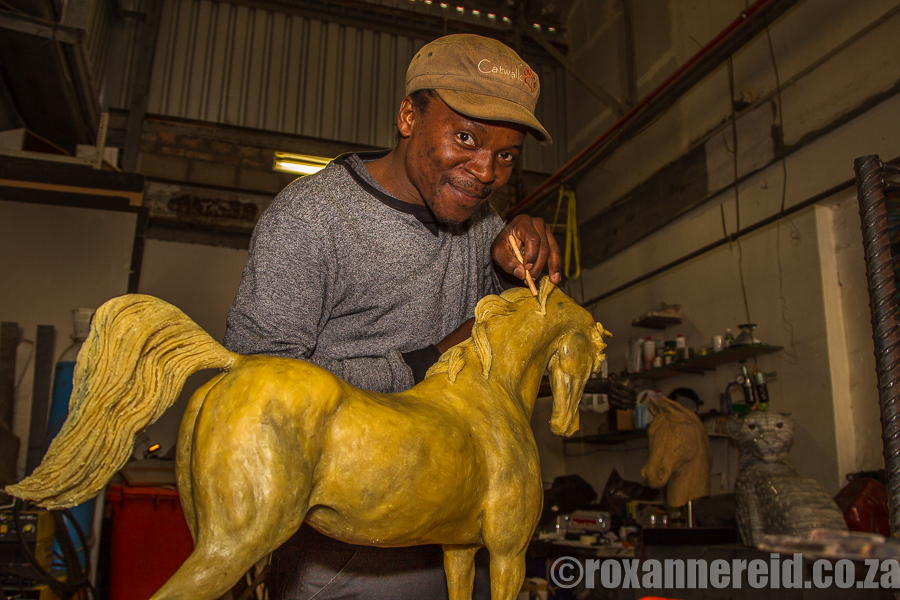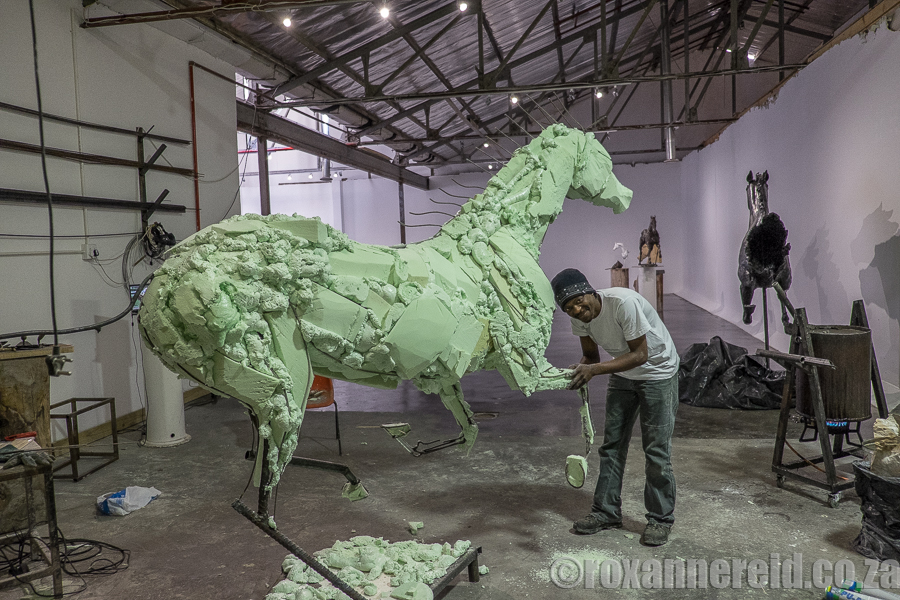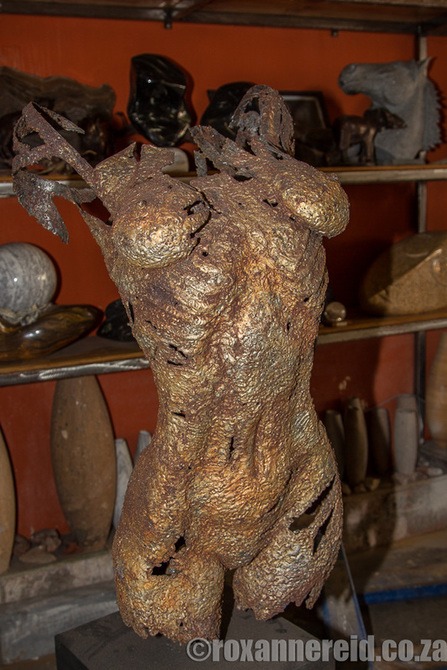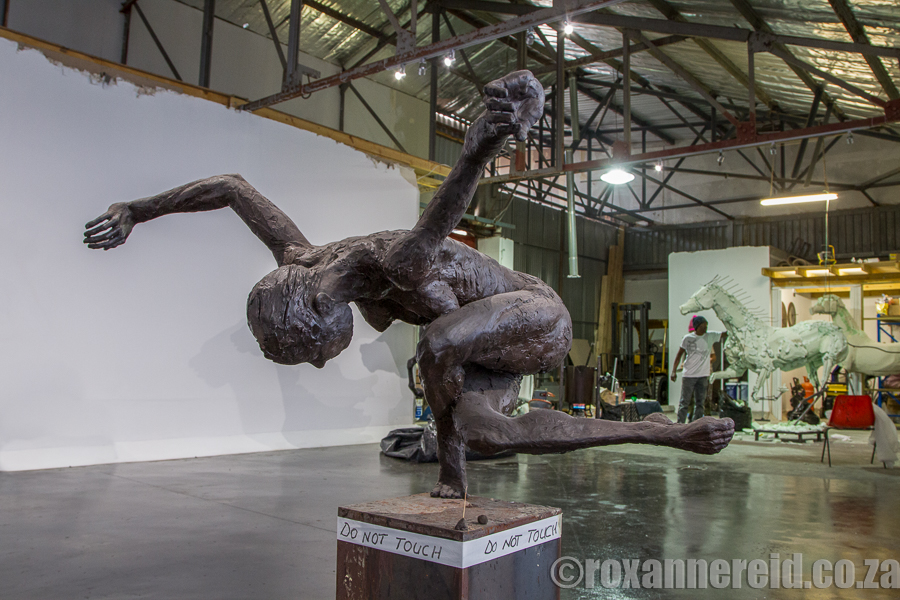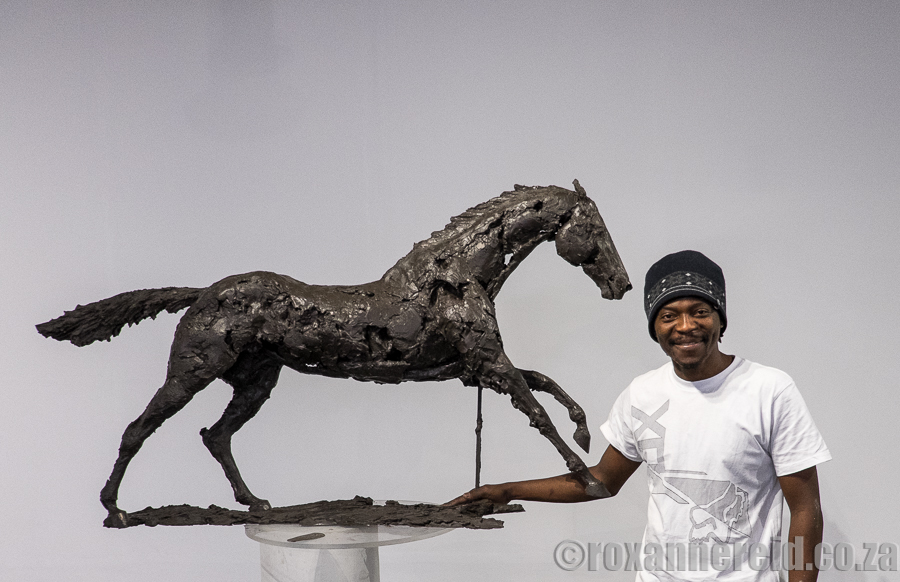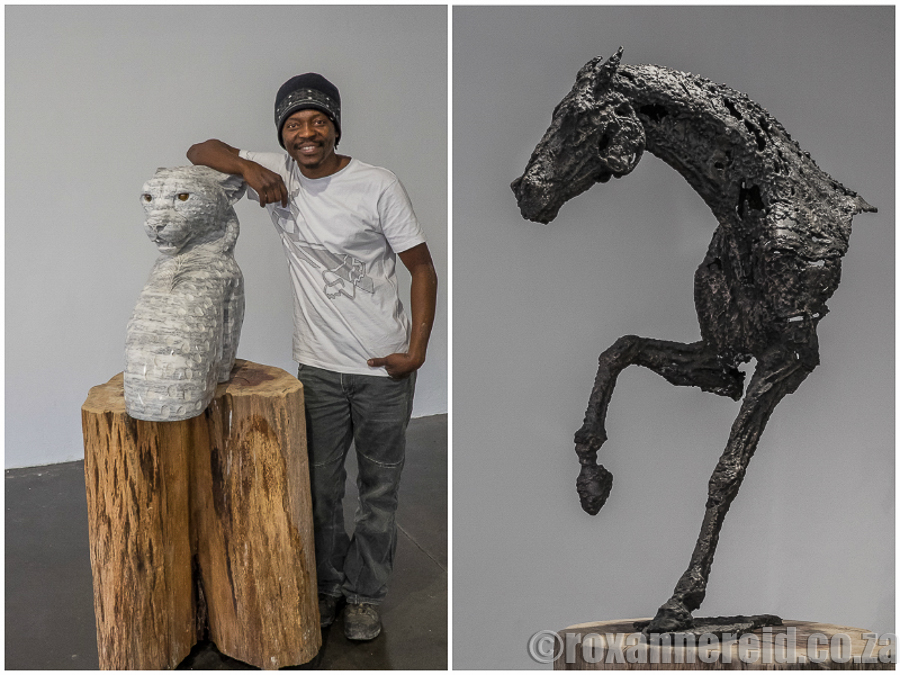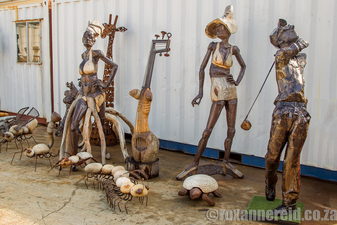
By Roxanne Reid
Think Hout Bay is about horses, mansions and seafood? It is, but there’s an edgier creative side too. Venture all the way along Harbour Road to the Harvest Centre and a different world will open up when you meet Hout Bay’s Zimbabwean artists.
Think Hout Bay is about horses, mansions and seafood? It is, but there’s an edgier creative side too. Venture all the way along Harbour Road to the Harvest Centre and a different world will open up when you meet Hout Bay’s Zimbabwean artists.
Go down past the harbour, past Mariners Wharf with its mussels and crayfish, its chi-chi beach clothing, sea-art gifts and curios. Go down to the grittier, less picturesque end of Harbour Road with its grungy red-brick buildings, barbed wire and litter rustling in roadside gutters. Here the smell of fish is strong in the air and scavenging seagulls are raucous overhead.
This is where you’ll find the Harvest Centre. It doesn’t look like much from the outside (and it’s somewhat eclipsed by the better known Bay Harbour Market next door), but it’s worth the journey.
This is where you’ll find the Harvest Centre. It doesn’t look like much from the outside (and it’s somewhat eclipsed by the better known Bay Harbour Market next door), but it’s worth the journey.
It’s is a repurposed industrial space, with metal shipping containers and grubby buildings flanking a scrappy tar-and-concrete alleyway that was once the haunt of the old fish factory’s delivery trucks. It’s like falling down Alice’s rabbit hole to discover a world of amazing art and artists, from bronze and stone sculpture to wire art, from wooden tables and marimbas to sculptures made from recycled metal.
The Mutasa brothers
A flicker of light, a hum and the whiff of burning metal. Something is going on behind a closed slat door. This is where brothers Mambakwedza and Chenjerai Mutasa make art from scrap metal like flash plates, bicycle chains, old radiators, brake shoes, exhaust pipes and whatever other junk they can find on their adventures in the scrap yard. ‘Everyone else is lining up to throw stuff away and they don’t know why we would be buying it,’ chuckles Mamba.
A flicker of light, a hum and the whiff of burning metal. Something is going on behind a closed slat door. This is where brothers Mambakwedza and Chenjerai Mutasa make art from scrap metal like flash plates, bicycle chains, old radiators, brake shoes, exhaust pipes and whatever other junk they can find on their adventures in the scrap yard. ‘Everyone else is lining up to throw stuff away and they don’t know why we would be buying it,’ chuckles Mamba.
The yard outside their workshop is full of animals and creatures made of wood, stone and various recycled metals. An almost life-size horse rears up, its muscles taut, its bicycle-chain tail and mane flowing. There’s a menagerie of warthog, meerkat and kudu, as well as giant insects made of stone and metal.
A small band of skinny violinists, saxophonists and trumpet players jive to the beat of silent music. A long-legged ballerina with sparkplug hair, a golfer, a patch-worked metal violinist lost inside his music, a woman with attitude, her body metal and her flowing skirt made of wood. These are some of the characters you’ll meet.
Inside the workshop slats of wood are nailed together to form a canvas for the artist to ‘paint’ a Picasso-like face on it using wire. A titanic metal figure emerges from the clutches of a twisted tree branch like some mythical creature. The pieces are so creative, so engrossing, that it’s hard not to reach out and stroke them, just to feel their energy buzz up my arm.
I try to tell the brothers what I’m feeling but they don’t need my platitudes; they know they have that special spark. Their clients from around the world know it too. ‘Most of our work goes overseas,’ Chenjerai explains. ‘Even the few pieces we sell locally are to foreigners living in South Africa.’
I want to know what stirs them to create. ‘I’ve been making things since I was about five,’ says Mamba. ‘We just follow the piece and it tells us where to go.’ He makes it sound so easy.
I want to know what stirs them to create. ‘I’ve been making things since I was about five,’ says Mamba. ‘We just follow the piece and it tells us where to go.’ He makes it sound so easy.
The brothers were born in Zimbabwe where their mother’s pencil drawings inspired them. Later they were apprenticed to their uncle, a stone sculptor. Then came two years of formal training, during which they learned drawing and painting before majoring in sculpture. ‘I won a 10-year visa to work in the US,’ Chenjerai smiles. Mamba has also worked in the US, Canada, the Netherlands, Italy and other parts of Africa before settling in Hout Bay in 2012.
Follow the Mutasa Gallery on Facebook
Follow the Mutasa Gallery on Facebook
Robin Kutinyu
Just across the courtyard is the sculpture studio and brand new gallery of Zimbabwean, Robin Kutinyu, who first learnt his technique from his artist and stone sculptor father. ‘When I came home from school I spent all of my time sculpting with him,’ he remembers. ‘I started with soapstone because it’s soft and easy to work.’ By the age of ten he had started selling some of his work, mostly turtles and birds.
Just across the courtyard is the sculpture studio and brand new gallery of Zimbabwean, Robin Kutinyu, who first learnt his technique from his artist and stone sculptor father. ‘When I came home from school I spent all of my time sculpting with him,’ he remembers. ‘I started with soapstone because it’s soft and easy to work.’ By the age of ten he had started selling some of his work, mostly turtles and birds.
‘But then I wanted to work with hard stone so I went to a class to learn to work with marble.’ Nowadays he sculpts in granite, marble, sandstone, wax (to be bronzed), clay, cement – you name it. He still loves portraying animals but is also fascinated by the human form.
When we visited his studio he had a beautiful female figure in wax waiting to be bronzed and a woman’s torso that I’d have bought if I had the space or the money. ‘It’s a challenge to catch the movement of the human form,’ says Robin. He has spent countless hours studying masters like Donatello, Bernini and Rodin, as well as Leonardo and Michelangelo, to understand how best to achieve this.
All the other pieces at the time were animals. Although he has carved the Big Five, cheetahs, even two life-size tigers from granite for a US commission, this softly spoken and charming sculptor also has a thing for horses and he’s working on commissions for the horse fraternity. ‘It means lots of research because every breed is different and you must be accurate in your portrayal,’ he says.
He uses a variety of techniques, from textured finishes to smooth wax that shows as fine a detail as a vein on the horse’s face. We watched him working on the mane to create a voluptuous flowing movement with a shaping tool. Once he’s happy with the piece it will be bronzed.
‘I try to capture the essence of my subject, to immortalise a certain moment,’ he says. ‘My work is about the soul of my subject, not just the outer form.’ Asked where he gets his inspiration, he says it might be in a quarry where the stone ‘calls out’ to him.
‘I try to capture the essence of my subject, to immortalise a certain moment,’ he says. ‘My work is about the soul of my subject, not just the outer form.’ Asked where he gets his inspiration, he says it might be in a quarry where the stone ‘calls out’ to him.
Like the Mutasa brothers, most of Robin’s clients are overseas, the rest foreigners living in South Africa. He first came to this country 13 years ago because he was finding it increasingly difficult to service his international clients from Harare. He has exhibited in South Africa as well as Australia, Belgium, Bermuda, Kenya, the US. His ex-wife and daughter live in the UK and he’s hoping to participate in the Chelsea Art Fair in London in 2017.
Follow Robin Kutinyu on Facebook
See Robin’s website
Follow Robin Kutinyu on Facebook
See Robin’s website
